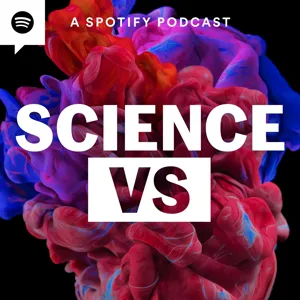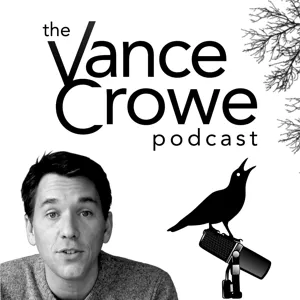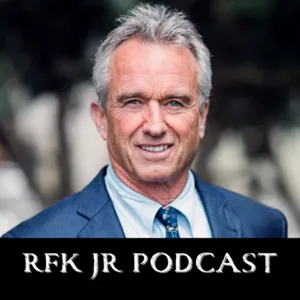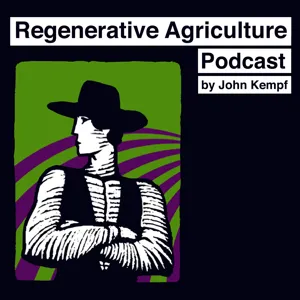Podcast Summary
The Importance of Bees: Pollinators and Economic Value: Bees contribute $200B to our food system and economy through pollination, but their populations are threatened by diseases like Colony Collapse Disorder, putting our food supply and environment at risk.
Bees are essential for our food system and economy, as they help pollinate a wide range of fruits, vegetables, and crops worth over $200 billion. However, bee populations are in danger due to mysterious diseases like Colony Collapse Disorder, which causes bees to disappear from their hives. This issue has become a serious concern, as bees are crucial for the blooming of flowers and plants, and a world without bees would result in a bland existence with limited food options. Beekeepers, like Steve Ellis, have reported significant losses, with some reporting that up to 50% of their bees have died. The stakes are high, as the absence of bees would lead to a world without blooming flowers and plants, and a diet consisting mainly of gruel. It's important that we take action to save the bees not only for the sake of the environment but also for future generations.
Dead Bees and Potential Causes: European countries suspect neonicotinoid pesticides for bee deaths, but causes remain unclear, with diseases and industrial farming also under investigation
The large number of dead bees surrounding certain hives is a concerning sign of potential issues threatening bee populations. The causes of this phenomenon are currently under investigation, with three main suspects: pesticides, diseases, and industrial farming. Neonicotinoid pesticides, in particular, have gained attention due to their link to bee colony collapse. These nicotine-based insecticides, introduced in the 1990s, have been shown to harm bees more than previously understood. Neonics have been linked to empty hives and an increased number of dead bees. European countries have responded with restrictions and even potential bans due to their concerns. The question remains, however, as to whether these pesticides are solely responsible for the bees' demise. To gain further insight, we spoke with Judy Wu Smart, an entomologist at the University of Nebraska Lincoln.
Neonics' Long-term Impact on Bees: Neonics, though not killing bees directly, can negatively impact their health and productivity through long-term exposure, leading to potential hive collapse.
While neonicotinoids (neonics) may not be directly killing large numbers of bees, they could still be harming them through long-term exposure. Neonics, which are similar to nicotine and act as a stimulant, can lead to paralysis and death when bees are exposed to high concentrations. However, most bees are not taking in enough neonics to kill them. Instead, they may be ingesting small amounts over time, which can negatively impact their health. Neonics often get coated onto seeds and move through plants, making it easy for bees to accidentally consume them while pollinating. Judy, an expert in bees, conducted an experiment in a small shed to study the effects of neonics on queen bees. She found that queens exposed to neonics were significantly less active and laid about half as many eggs as healthy queens. This reduction in egg-laying could lead to the eventual collapse of the hive. Judy's findings suggest that neonics may be more harmful to bees than previously thought, as the focus has been on whether they kill bees or not. Instead, the issue may be the long-term effects of sublethal doses on their health and productivity.
Neonicotinoids harm bees in various ways: Neonicotinoids can harm bees by killing them with high doses and affecting their memory, disorientation, and waggle dance with smaller doses. However, bees face over a hundred different compounds, and the combination of these chemicals might be harming them.
Neonicotinoids, a type of pesticide, can harm bees in various ways, but they are not the sole cause of the bee population decline. While these pesticides can kill bees if they are exposed to high doses, studies suggest that smaller doses over time can harm their memory, disorient them, and even affect their waggle dance. However, it's important to note that bees face exposure to over a hundred different compounds, and researchers are concerned that these chemicals might be working together to harm bees. Neonicotinoids are just one class of insecticides that bees encounter. Additionally, bee populations are also threatened by diseases, such as bee measles or beezels, which can weaken and even kill them. Therefore, it's crucial to consider multiple factors when addressing the issue of bee population decline.
Bees face various diseases from parasites and viruses: Transporting bees globally for pollination can introduce deadly diseases, threatening local bee populations
Bees, like humans, can get infected with various diseases from parasites and viruses. These diseases can have devastating effects on bee populations, leading to weaker bees, deformities, and even death. One such disease is the deformed wing virus, which can render bees unable to fly. Another disease is caused by a parasite that lives in the gut of bumblebees, making it harder for them to collect food and causing "bee diarrhea" filled with parasites. These diseases are often introduced to new populations when bees are transported around the world for pollination purposes. For instance, the Varroa destructor mite, which is a major problem for honeybees in the US, originated from Asian bees. Similarly, the world's biggest bumblebee, Bombus dalbomiae, is at risk of extinction due to imported bees spreading diseases to which it has no immunity. Therefore, the transportation of bees around the world for pollination purposes poses a significant risk to local bee populations and their health.
Habitat loss is the primary cause of bee declines: Modern farming practices reduce bee habitats, leading to their decline, but a combination of factors likely contributes to colony collapse disorder
The decline of bee populations is a complex issue with multiple contributing factors. While industrial agriculture, diseases, and neonicotinoid pesticides can all harm bees, none of these factors alone can fully explain the "beepocalypse." A study published several years ago found that habitat loss is the primary cause of bee declines. Modern farming practices, which replace wild meadows with expanses of a single crop, limit the variety of flowers available for bees to forage. From a bee's perspective, the countryside has become a "sterile green desert." However, the death of bees, such as those kept by beekeeper Steve, is likely caused by a combination of factors. The best science suggests that there is no single killer responsible for colony collapse disorder, and all of the suspects - pesticides, parasitic mites, diseases, and industrial farming - seem to be interacting to make bees weaker, sicker, and deader.
Factors affecting bee populations are complex: Despite global honeybee population increase, wild bee populations decline, and understanding the complexities is crucial for effective conservation efforts
The factors contributing to the decline of bee populations, as well as the health issues in bees, are complex and multifaceted. It's not just about smoking, drinking, or being overweight; it's about all of these factors and more. Similarly, the situation with bees is not as simple as the "bee pocalypse" narrative might suggest. While honeybee numbers have increased globally due to more beekeeping, wild bee populations are declining. Approximately 20,000 bee species exist, but beekeepers only breed fewer than 20 of them. Wild bees, which are not farmed, help pollinate various crops that honeybees aren't effective at. Wild bees are in trouble, and the Shrill Carter Bee, for instance, is a prime example. This bee, once common in the south of England, is now down to only a few tiny populations. Other bee species are also disappearing, not just in Britain. So, the situation with bees is more nuanced than the headlines might suggest, and it's essential to understand the complexities of the issue to address it effectively.
Bee Population Decline: A Complex Problem: The decline in wild bee populations poses a significant threat to food production, potentially causing a 8% drop. Human activities like intensive farming, pesticides, and climate change contribute to this issue, requiring a multi-faceted solution.
The health and population of bees, both honeybees and wild bees, are crucial for global food production. While it's good news that the numbers of honeybees are increasing, the decline in wild bee populations is a significant concern. If all bees were to disappear, food production could drop by up to 8%, making it harder to feed an ever-growing population. The causes of bee population decline are complex, with pesticides, intensive farming, and climate change being major contributors. Essentially, humans have created an inhospitable world for bees while relying on them for pollination. Fixing this issue isn't straightforward and requires more than just changing pesticides or farming practices. It's a complex problem that requires a multi-faceted solution.




